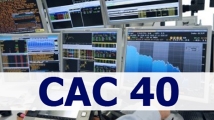How to Invest in CAC 40
Similar to America’s Dow Jones Industrial Average, the CAC 40 Index is the benchmark stock market index in France. Comprising 40 of France’s largest listed equities measured by liquidity and market capitalisation, it is almost entirely made up of French-domiciled companies, but it has a multinational reach that makes it one of the most popular European financial exchanges with foreign investors. CAC stands for “Cotation Assistée en Continu”, and it is one of the primary indices of the Europe-wide stock exchange group known as Euronext, along with Lisbon’s PSI-20, Brussels’ BEL20 and Amsterdam’s AEX. It is the index that is typically used to represent the overall direction and level of the French financial market.
The CAC 40 Index dates back to 1987 when it was launched on December 31st of that year with a base value of 1,000. During the dot com boom of the early 2000s, it reached a high of almost 7,000, but in recent years it has fallen back to about 3,000 as a result of the 2011 economic crisis. There have been a number of other indices introduced to operate alongside the CAC 40, including the CAC Mid 60 and CAC Next 20, and these are also popular with investors. Around 45% of the shares listed on the CAC 40 are owned by overseas investors, which is more than any of the other main European indices. The most significant overseas holders of CAC 40 shares include investors from Germany, Japan and the UK. This is probably because the companies listed on the CAC 40 are generally more international than those listed on other European market indices, with many of the companies conducting a large amount of their business overseas, and employing more than two thirds of their workers from outside France.
| Broker | Bonus | More |
|---|
Which Companies are Found in the CAC 40 Index?

- Sanofi – a France-based diversified and global healthcare company that runs 55 projects within its clinical development portfolio
- Total SA – an international gas and oil company based in France, with operations across over 130 countries
- BNP Paribas – a France-based banking group that has a focus on investment, retail and corporate worldwide banking operations
- Société Générale – a banking group based within France with operations across 85 countries
- France Télécom – a telecommunications operator based in France with a focus on both mobile and fixed communications
- ArcelorMittal – a global producer of steel with a base in France that produces shipments of around 85 million tons, and has a total production of about 90.6 million tons
A wide selection of industries are found on the CAC 40 index, representing a large part of the French economy. Those industries that are most widely found on the index include airlines, hotels, telecommunications, chemicals, steel, industrial materials, insurance, banking, construction, electronic equipment, computer software, aerospace and defence, supermarkets, medical instruments and supplies, electric utilities, gas and oil, beverages and food, building materials, personal products, publishing, tyres, apparel, retail, automakers, pharmaceuticals, semiconductors, real estate, media, water, and entertainment.
A Short History of the CAC 40 Index

Listing Companies on the CAC 40 Index
The companies that make up the CAC 40 index are chosen and overseen by le Conseil Scientifique, a steering committee with members taken from the Autorité des Marchés Financiers (AMF), the French market regulator, as well as representatives from the French Treasury Department, France’s Central Bank, and leading economists and academics. In order to appear on the CAC 40 index, a stock must meet certain criteria that have been set regarding trading volume and market capitalisation on the Euronext Paris Exchange. Its issuers must also have maintained significant assets or have a primary headquarters located in France. The nationality of the issuer has no bearing on whether or not a company can be listed on the index. The measurement of market capitalisation is based upon the free float of the issuer’s shares, with a minimum required of 15%. Because the CAC 40 is a market capitalisation-based index, it is different from many of the other well-known global indices like the Nikkei 225 or the Dow Jones Industrial Average, all of which are indices that are price-weighted.
Other educational materials
- Dow Jones Industrial Average
- Euronext
- FTSE 100 Index
- FTSE AIM All-Share Index
- FTSE All-Share Index
- Japanese Exchange Group (JPX)
Recommended further reading
- Efficiency tests of the French index (CAC 40) options market. Capelle-Blancard, G. and Chaudhury, M., 2001, October. In EFMA 2002 London Meetings.
- “Direct and Indirect Effects of Index ETFs on Spot‐Futures Pricing and Liquidity: Evidence from the CAC 40 Index.” Deville, Laurent, Carole Gresse, and Béatrice De Séverac. European Financial Management 20.2 (2014): 352-373.


